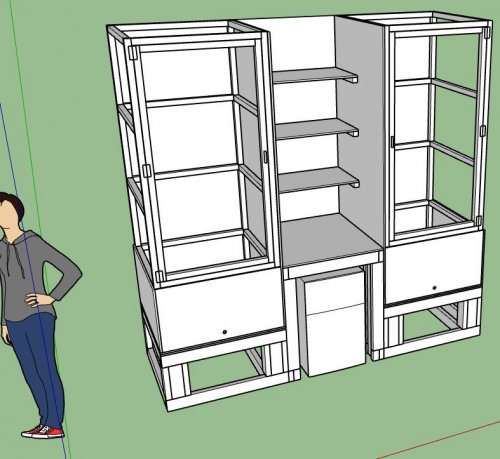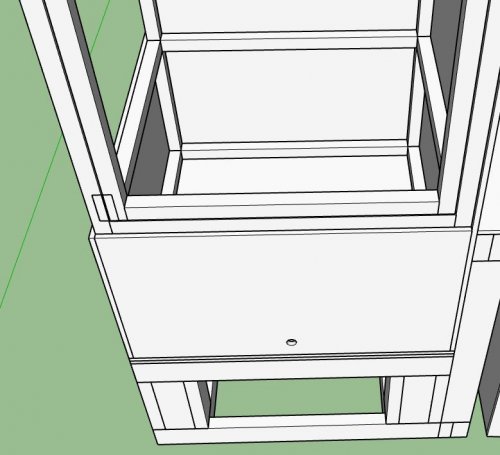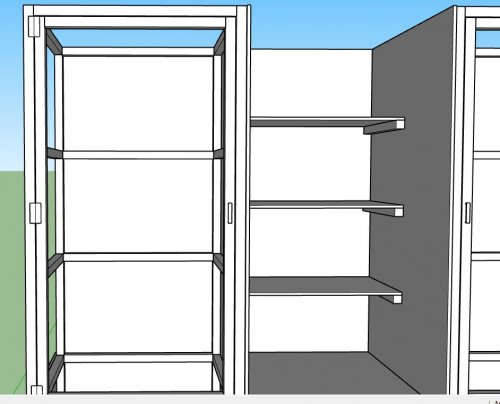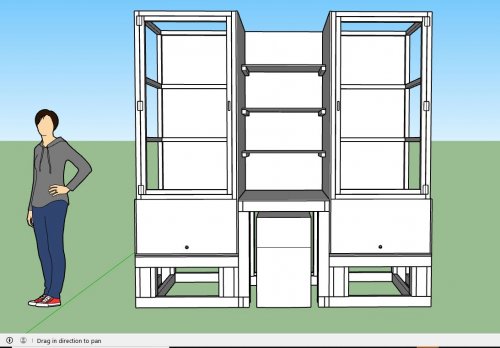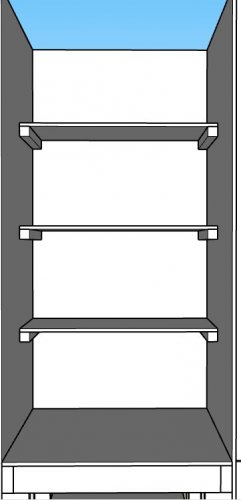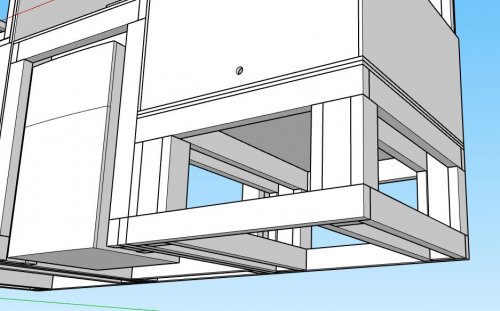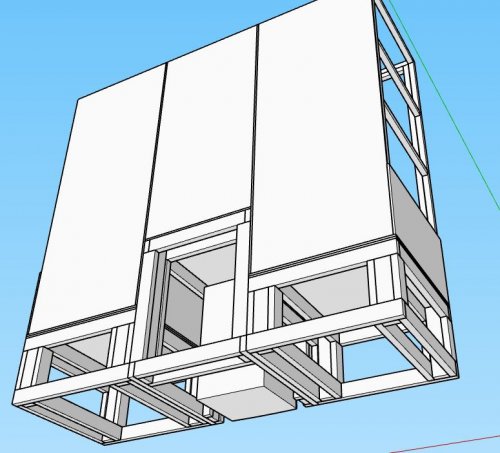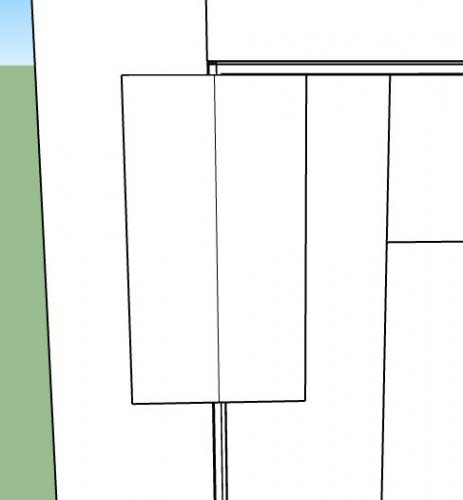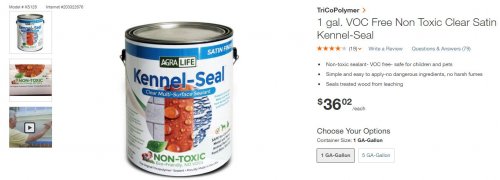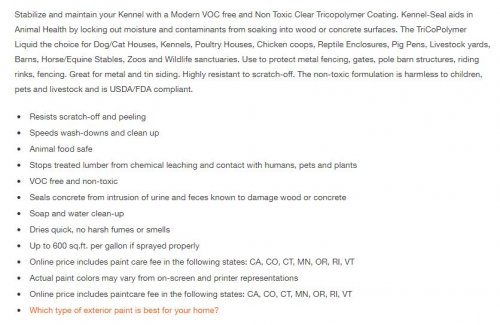ERKleRose
Chameleon Enthusiast
Here's my Sketch-Up model for two chameleon cages with a feeder insect stand with mini fridge in between. Everything is to scale so I can just click on a component for exact dimensions. It'll be screened-in from the inside of the cage with 1/2" vinyl coated wire and screened-in from the outside of the cage with vinyl screen. I'll have a bulkhead with a ball valve in each cage drain hole for easy drainage. The support bars inside of the cages will have circle hooks to weave vines through. Both cages will have a custom backgrounds and be fully bioactive and planted. I also have two spare cages for outside time. Thoughts?
https://1drv.ms/u/s!Avq4a-4tGs4WgZ0fEZiZ0lE2Wsnvyg
https://1drv.ms/u/s!Avq4a-4tGs4WgZ0fEZiZ0lE2Wsnvyg

